|
Roses are world favourites and can be spectacular, however pests and diseases enjoy their company also.
Powdery Mildew and Blackspot on roses
Warm, humid summer conditions provide the ideal conditions for fungal diseases to thrive. The two main problems are powdery mildew and black spot.
Powdery mildew appears on new foliage and buds, first as a series of small white spots, which later become a furry mass of mould. It causes the leaves to wilt and wither and eventually die. Black spot shows up on older leaves as dark, circular marks and eventually the foliage turns yellow and falls to the ground.
Both these fungal diseases can severely stress the plant and diminish its performance. Not only will your roses look unattractive, but they will produce a poor show of blooms. So how do we safely get rid of these problems?
When planting rose bushes it is essential to space them far enough apart to allow for good air circulation all round. They should be planted in full sun away from other plants that will smother their stems and compete for moisture and nutrients.
Hygiene is important: clean secateurs with a solution of bleach and water between each bush; never compost prunings; and remove any fallen foliage. It is generally best not to use chemicals in the garden, but choose instead one of the following organic and natural alternatives to stop fungal diseases.
Firstly, you can use lime sulphur diluted with water to the manufacturer's recommendations, and sprayed over the stems and trunk. Apply this in the winter when the plant is dormant.
Secondly, some organic growers have used milk and baking soda successfully. Simply mix half a litre of milk with two tablespoons of baking soda in five litres of water and spray liberally over foliage and stems. Apply at any time of the year.
Thirdly, use SeaMax Organic Fertiliser, which not only prevents fungal disease but also fertilises your plants at the same time. Professional rose growers have been using this excellent product for years with superb results, and it is now available for the convenience of home gardeners.
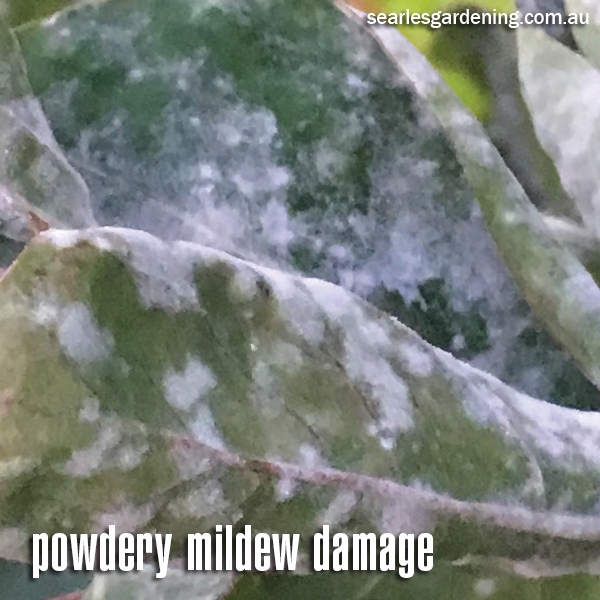 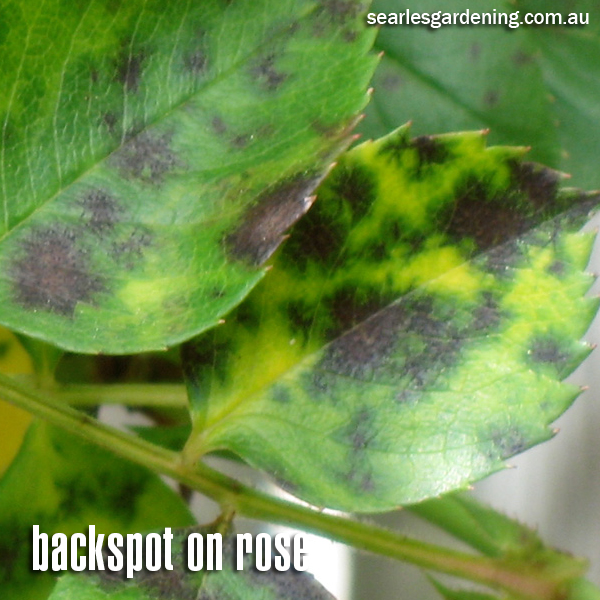
Rust on roses
Rust is a form of fungal disease primarily attacking roses' older (or lower) foliage. Raised orange or rusty-coloured spores appear on the undersides of the leaves, causing the plant to lose vigour. The best treatment is to spray with Mancozeb Plus, covering all parts of the bush and repeat spray if necessary every 10 days.
Aphids on roses
Aphids commonly appear on flushes of new growth and rose buds and quite often, they will only remain on the plant for a short period of time. Many species of aphids are green, but others appear brown, black and red. Generally, if there are predatory insects in the area such as ladybird larvae, the aphids will be kept under control. In severe cases, spray them with Searles Rose Pro Black spot & Insect Killer, a natural pyrethrum spray. Use Searles Ecofend Vegetable & Garden Insect & Mite spray for a natural and organic spray alternative.
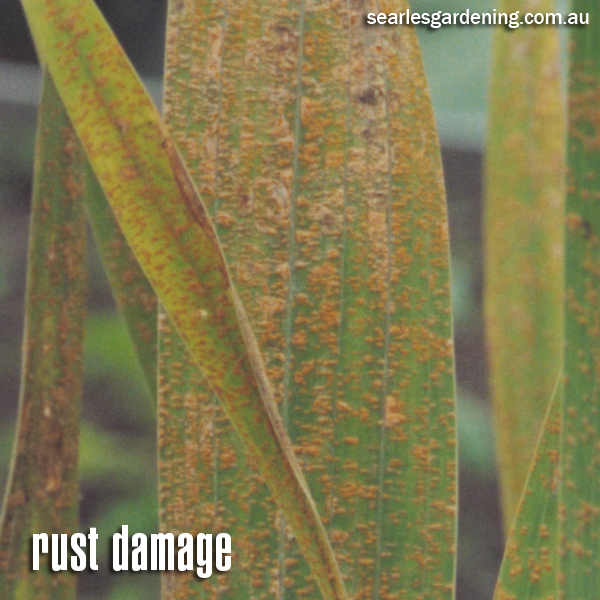 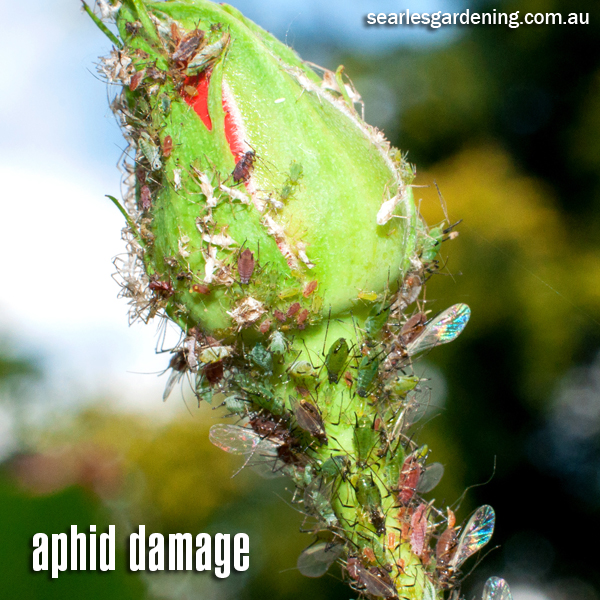
Two-spotted mite on roses
Two-spotted mite (Tetranychus urticae) affects ornamentals, roses, fruit trees and some vegetables. Affected leaves have a mottled, pale colour appearance or can be bronzed or shrivelled. The underside of the leaves look dusty with little tiny mites often visable. Their fine webs can be seen stretched over leaves and stems. They multiple easily in hot, dry conditions, so keep watering regular and mulch soil to reduce dry conditions where thrips thrive. Leave them to natural predators, but if the problem is severe, spray Searles Rose Pro.
Scale on roses
Scale are sap-sucking insects that commonly affects the lower and older stems of rose bushes. In severe infestations, the foliage becomes covered by a sooty black mould. This is because the scale insect secretes a sugary substance which causes the sooty mould to blossom over the foliage. The sooty mould looks terrible but is not an active threat other than to reduce photosynthesis which will weaken the tree over time. It is the scale that needs to be controlled and the best way to do this is by using a white oil spray, such as Searles Pest Gun. Incidentally, check for ant activity as ants are usually the culprits for bringing the scale onto the plant in the first place. The ants shift scale from plant to plant and feed from the scale insect's sugary secretions. So if there is ant activity in the tree, you may need to also control the ants or prevent them from accessing the tree.
 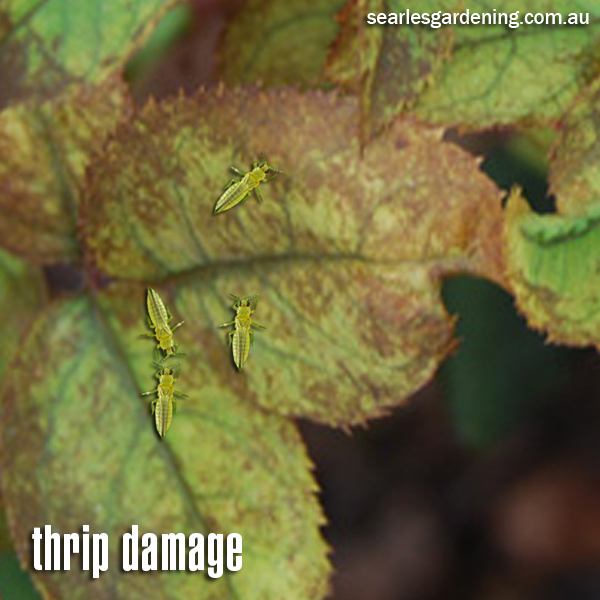
Thrips on roses
Thrips are tiny (about 2mm long), sap sucking insects that attack roses, azaleas, fruit trees, tomatoes, onions and beans. Thrips also spread plant viruses. They lay their eggs inside plant tissue so put affected plant parts in the bin - not the compost system. Predators are ladybirds and lacewings. For organic control, use Searles Bug Beater or for 3–4 week residual control use Searles Conguard.
|

